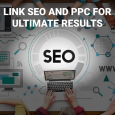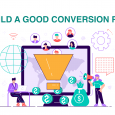Increase your Conversion Rate by the conversion rate optimization. Phases of the CRO Process:
Figuring out why visitors are not getting converted.
Making modifications to your website in order to overcome these conversion roadblocks.
To see if these modifications are effective, put them to the test.
Simply check out these 11 tried-and-true CRO techniques to improve customer happiness and put these measures into action:
1 Increase Your Page Speed
Online customers nowadays have high expectations. They, in particular, want websites to load rapidly. Even a brief delay might cause potential consumers to hit the “back” button and give your competition their business. In fact, if a website takes longer than 3 seconds to load, 40% of visitors will quit it.
You must keep website visitors on your page long enough for it to load if you want to increase your conversion rate. As a result, reducing the time it takes for your website to load is an easy approach to increase your conversion rate.
2 Optimize For Mobile
Did you realize that mobile devices account for more than half of all internet shopping? If you want to approach this big group of clients, make sure your website is mobile-friendly. You should also go over the stages in your mobile checkout procedure again. Allow customers to pay using Paypal, GooglePay, or ApplePay to make checking out as quick as possible—the less forms they have to fill out, the more likely they are to finish their order, increasing your conversion rate.
3 Write a Compelling Headline
The title of your website is viewed by around 80% of visitors, but only 20% will read anything further. As a result, the language of your headline is critical for your conversion rate.
Your value proposition should be clearly communicated in your headline. Every word in your headline is important, so try out a few different variations to see which one works best.
It’s remarkable how changing a few words in your headline may drastically increase conversion rate.
4 Include an Action-Inspiring CTA
When it comes to conversion rate optimization, your web page’s call-to-action (CTA) is another crucial component. Wondering how to write a call to action that converts?
Effective CTAs are:
- Actionable – The purpose of a CTA is to inspire action, so you must use action-oriented language, like “Download Now” or “Yes, Give Me That Discount!”
- Preceded by persuasive copy – To motivate website visitors to click on a CTA button, you need to explain the value of your product, service, or promotional offer. Explain how your offer (whether it’s a product or service, a downloadable piece of content, or a free trial) will benefit them.
Use language that your target audience understands and that solves their problems. They’ll be far more likely to click on the call to action and convert if you get your messaging correct. Easy to locate — If visitors to your website can’t discover your CTA, they won’t click on it. As a result, your CTA must be straightforward to locate. Make sure it’s strategically placed on the page in a way that catches the eye. You may make it stick out by using vivid colours. One per page – Limit your CTAs to one per web page, even if you have several offerings to present with your website visitors. You can then design the rest of the page to lead your website visitors to this CTA.
5 Remove Distractions From Your Landing Pages
Consider yourself as a shopper at a well-designed store. Every item is beautifully displayed under ideal lighting. All of your queries will be answered by the sales associate. Consider shopping in a cluttered store where everything is strewn around carelessly. Each thing has to be hunted down, and the sales clerk is nowhere to be found. You’d probably walk out of this store without buying anything since the shopping experience is too taxing. These two examples demonstrate that when there are less distractions, purchasing a product or service is easier. Make it as easy as possible for your website visitors to get the information they need to convert.
A headline and subtitle that grabs the reader’s attention.
An summary of your product or service’s merits and characteristics
Testimonials and a product review are examples of social evidence.
A visually appealing representation of your goods or service
A CTA button that is worth clicking.
6 Simplify Your Forms
We’ve all been there: you start filling out an online form and quit up halfway through because it’s just too long.
Many individuals will not fill out a form if it asks for too much information. They’ll think the form is overly intrusive or time-consuming.
As a consequence, eliminating superfluous form fields is a good approach to boost your form fill conversion rate.
7 Gain Insights From Heat Mapping
If you’re not sure what’s important and what’s not on your website, heat mapping can assist you figure it out. When your website visitors explore your page, heat mapping shows you exactly where they click. As a result, you’ll be able to figure out what kind of material they enjoy the most. Many heat mapping programmes also let you watch screen recordings of your website users’ experiences, allowing you to observe things like:
What percentage of the way down the page they scroll
They come to a halt here to read more.
How much time do they spend on each section?
How much of a form do they complete?
You may have a far better idea of your website’s user experience by examining this activity. With this knowledge, you can make data-driven changes to your website to increase conversions, such as moving your CTA to the top of the page or streamlining your forms.
8 Conduct Customer Surveys
Heat mapping reveals what your website visitors do on your site, but it doesn’t explain why they’re doing it. You may learn more about your visitors’ motives by asking them. Simply conduct a brief survey that includes the following sorts of questions:
What drew them to your website?
Were they able to locate what they were looking for?
How did people react to your website design?
Were they able to navigate your website without difficulty?
Were they interested in what you had to say?
What prevented them from converting?
You may improve the user experience of your website based on this input.
9 Establish Trust
It’s far simpler to persuade an internet user to convert on your website if you’ve built a foundation of trust. No one wants to give a dodgy website their credit card information. Similarly, many individuals will be hesitant to purchase anything without first seeing it.
You may quickly boost your credibility with the aid of :
Customer testimonies and reviews – Over 90% of customers are hesitant to buy something without first reading reviews. 5 You can provide these consumers with the social evidence they need to feel confident in their purchase by including testimonials and reviews right on your website or landing page.
Logos – If you’ve previously worked with any well-known corporations or brands, display their logos in a banner on your home page or landing page. Many internet visitors will identify these businesses and see yours as more trustworthy as a consequence. Your affiliation with well-known, well-respected businesses demonstrates your trustworthiness.
Money-back assurances – Another effective method to build confidence with website visitors is to provide a money-back guarantee. They’ll be much more likely to convert if they know they’ll get their hard-earned money back, since there’s far less danger involved.
Web design that has been updated – An ugly website with spammy links, obsolete information, and poor functioning is sure to turn off a potential consumer. Visitors will have a lot simpler time believing your brand if you update and upgrade your website.
10 Add a Chatbot
Even if potential customers trust your company, they may still have some specific questions about your products or services. If these questions go unanswered, they’ll be less likely to convert.
Fortunately, a live chat like a Chatbot can answer their questions right away directly on your website. Chatbots interpret text inquiries and generate automated responses that mimic a real person.
Once your inquisitive website visitors get their questions answered, they’ll feel more comfortable proceeding with a purchase.
11 Use A/B Testing
If you employ any of the ten tactics we’ve discussed so far, that’s great! You should see an uptick in your conversions in no time. However, CRO is all about tracking your progress and making adjustments according to the data.
That’s where A/B testing comes into play.
With A/B testing, you create two versions of a web page: web page A and web page B. These web pages should differ slightly. For example, one web page may feature slightly different:
- Headline, subheader, or CTA copy
- Web design elements
- Colors
- Layouts
- Pop-ups
Once these two pages are created, show web page A to half of your website visitors and web page B to the other half. After some time has passed, see which page receives a higher conversion rate. You can then use this better-performing page as your official web page.
CRO: Analyze, Hypothesize, and Optimize!
As you can see, CRO is sort of like a science experiment. You examine what’s preventing conversions, hypothesize potential solutions, and test them until your web pages are perfectly optimized.
By using the 11 tactics we discussed, you should see an increase in your overall conversion rate in no time.



